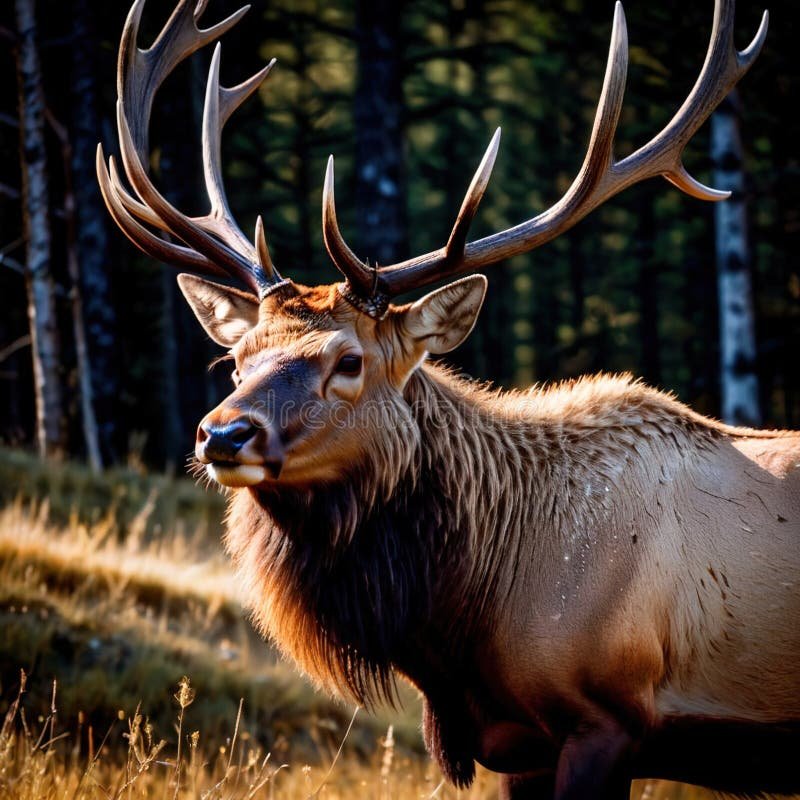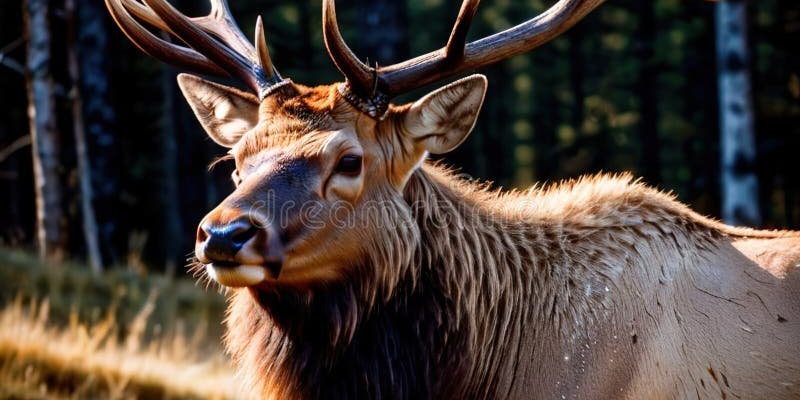
So, what exactly is the role of the elk in its ecosystem? To put it simply, these animals have a big hand in maintaining the health of their environments. By grazing on grasses, shrubs, and young trees, they promote biodiversity. Their habits can encourage new plant growth and create habitats for various wildlife. They’re like a natural tool that nature uses to keep everything running smoothly. Let’s dive into the reasons why elk are so fundamental to their ecosystems.
Understanding Elk’s Grazing Impact
Elk are herbivores, which means they primarily eat plants. Their grazing behavior affects the landscape significantly. They often consume young trees and shrubs, which actually opens up space for other plants to grow. This isn’t just about eating; it’s about creating a healthier environment.
When elk graze, they prevent certain species from dominating the landscape. This natural pruning encourages a wider variety of plants to flourish. Imagine a backyard where only one kind of flower grows. It might look pretty, but it lacks diversity. Elk help avoid this by eating specific plants, allowing others to thrive. This balance leads to healthier ecosystems overall.
Additionally, elk contribute to nutrient cycling. As they graze, they also leave behind droppings that enrich the soil. This waste is packed with nutrients and helps fertilize the ground for new plant growth. So in a way, elk are like nature’s composters. Their presence leads to a thriving habitat for insects, birds, and other species that rely on varied plant life.
Creating Habitats for Other Species
Elk play a vital role in shaping habitats that support a wide variety of wildlife. When elk munch on shrubs and young trees, they create open spaces and clearings. These areas are essential for smaller animals, like rabbits and ground-nesting birds, because they can avoid predators. It’s like offering a safe haven in a bustling city.
Moreover, when elk move through forests and grasslands, they create trails. These trails are not just shortcuts for elk; they become pathways for other animals too. Deer, coyotes, and even smaller critters use these paths, making traversing the landscape easier. In essence, elk help create a well-connected community in the wilderness.
Let’s not forget the role of elk in creating habitats for insects. Their grazing habits can lead to the growth of specific plants that attract pollinators. This is important for plant reproduction and overall ecosystem health. So, elk don’t just impact large mammals; they help sustain various life forms at all levels.
The Role of Elk in Seed Dispersal
You might be surprised to learn that elk also assist in seed dispersal. When they eat fruits and seeds from plants, they unknowingly carry those seeds in their digestive systems. As they move through different areas, the seeds get deposited in their droppings. This process aids in plant reproduction and helps diversify plant communities.
Think about it: a seed that’s digested by an elk and then deposited elsewhere has a better chance of growing in a suitable location. It’s like the elk are naturally planting seeds as they roam. This method of seed dispersal contributes to the spread of various plant species, which is essential for maintaining healthy ecosystems.
Furthermore, the variety of seeds that elk spread can lead to new plant communities forming in areas where they haven’t existed before. This not only benefits the plants but also provides new food sources for other wildlife. The availability of diverse plants can attract an array of species, making the ecosystem more vibrant.
Elk as Prey: Supporting the Food Chain
Elk occupy a vital place in the food chain. They are a primary food source for large predators such as wolves and bears. This predator-prey relationship is fundamental to maintaining population control within both elk and predator species. Without elk, larger predators would struggle to find enough food, which could lead to overpopulation of smaller herbivores.
This connection between elk and their predators emphasizes the delicate balance of ecosystems. When elk populations are healthy, they support the survival of a variety of predators. It’s a classic example of how one species can influence many others in its habitat.
Interestingly, changes in elk populations can have ripple effects throughout the ecosystem. If elk numbers decline, it may allow smaller herbivores, like deer, to overpopulate. This can lead to overgrazing, which can harm plant communities and, subsequently, the entire ecosystem. Thus, elk serve not only as a food source but also as a stabilizing force within their environments.
How Elk Interact with Their Habitat
The ways elk interact with their habitats can be quite fascinating. Their movement patterns and behaviors can significantly influence vegetation growth and landscape dynamics. For instance, elk tend to congregate in certain areas based on food availability, weather, and rutting season.
During winter, when resources are scarce, elk may migrate to lower elevations. This migration can inadvertently help regulate plant growth in both high and low areas. By grazing at specific times of the year, elk can help certain plants thrive while keeping others in check.
Moreover, elk often wallow in mud or dust to remove parasites and keep cool. These wallows can create small depressions in the ground that collect water. Over time, these areas may become small wetlands that provide habitat for amphibians and insects. It’s a great example of how elk, while simply tending to their needs, can create environments that benefit other species.
Conservation and the Future of Elk
The role of elk in their ecosystems is clear, but what about their future? Elk populations are threatened by habitat loss, climate change, and hunting pressures. Conservation efforts are crucial to ensure these majestic creatures continue to play their essential role in the ecosystem.
Many organizations focus on protecting and restoring elk habitats. This includes managing land use, protecting migration corridors, and enforcing sustainable hunting practices. Engaging local communities in these efforts is also vital, as the health of elk populations often reflects broader ecosystem health.
By securing safe spaces for elk to roam, we also protect countless other species that rely on healthy ecosystems. It’s a shared responsibility that requires cooperation from individuals, organizations, and governments alike. When we invest in elk conservation, we’re ultimately investing in the wellbeing of nature as a whole.
In summary, elk are essential players in their ecosystems, contributing to biodiversity, habitat creation, seed dispersal, and more. Protecting their populations not only benefits elk but ensures the survival of many other species that share their environment. So, the next time you think about elk, remember they’re more than just beautiful animals; they’re vital to the health of our natural world.

